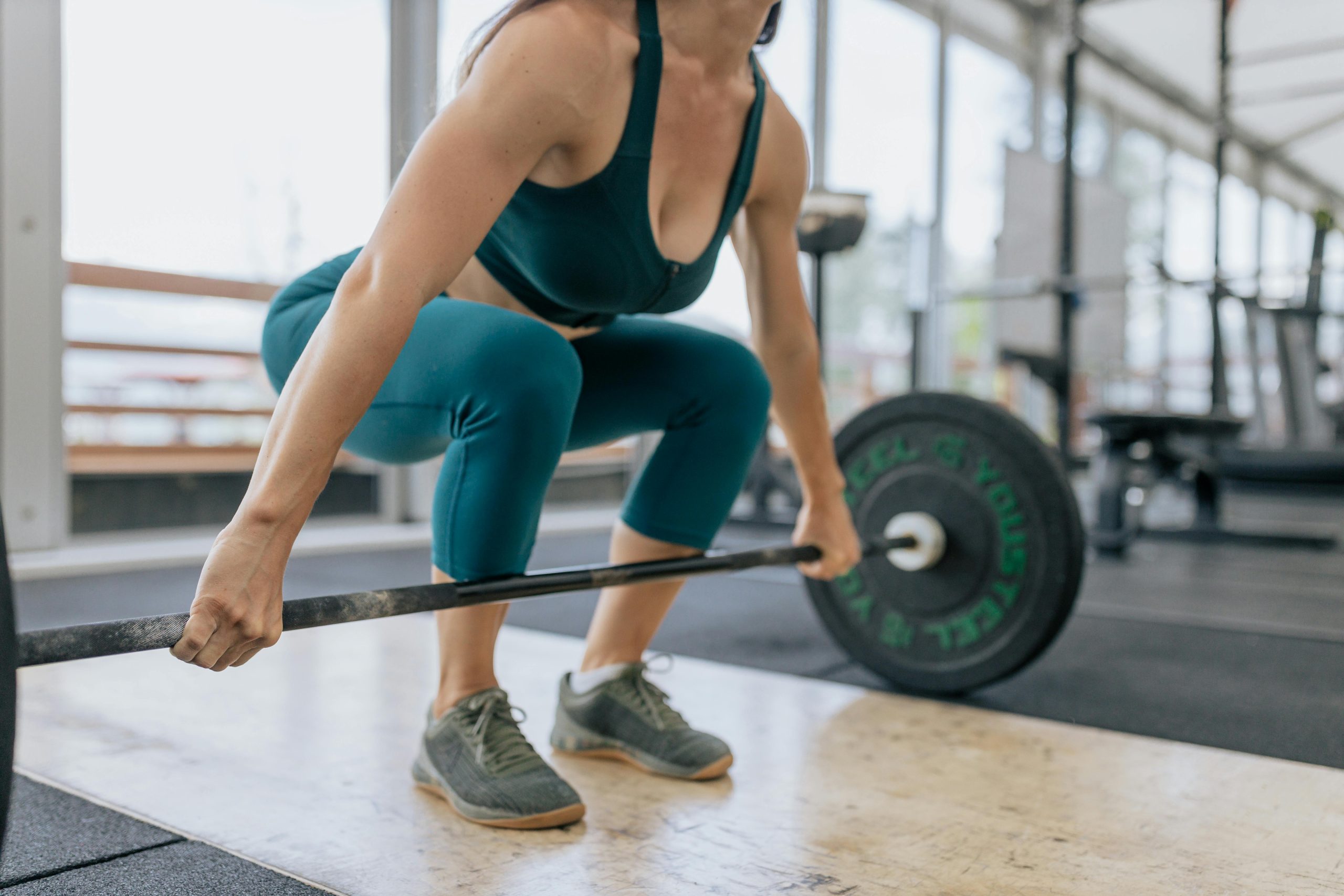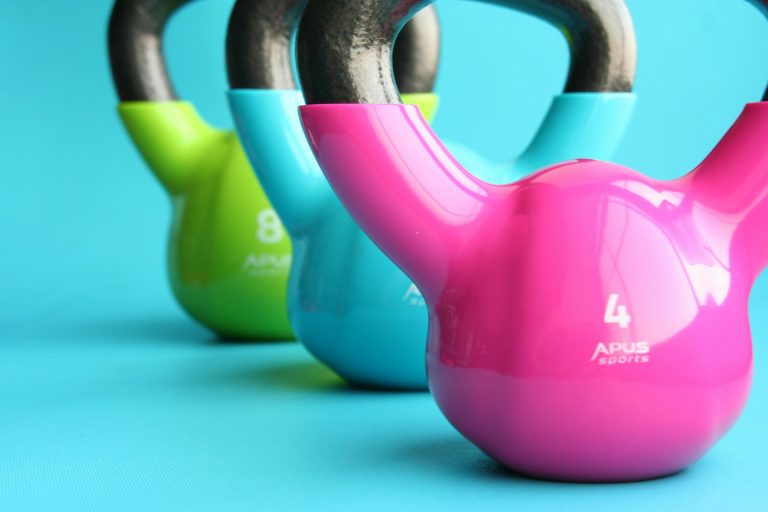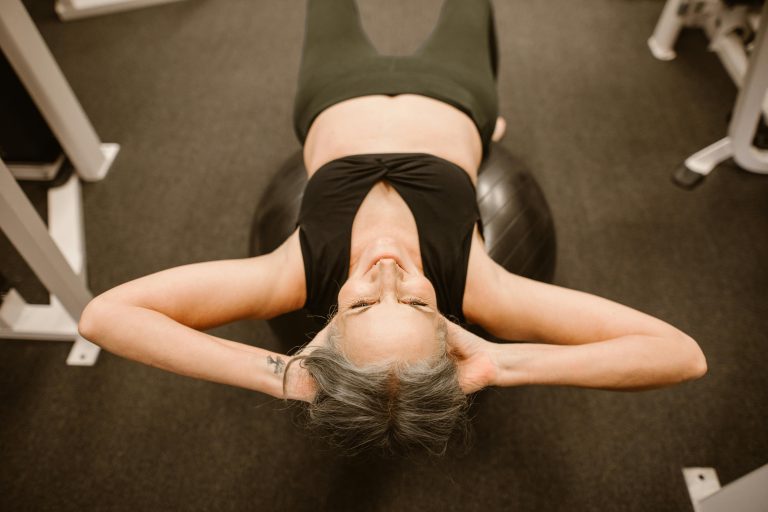
An Absolute Beginners Guide to Safe and Effective Strength Training
Introduction
If you’ve ever wondered “How much weight should women lift?” you’re not alone. It’s a common question for those starting or adjusting a strength training routine. The answer depends on your fitness level, goals and comfort but lifting the right amount of weight is key to building strength, preventing injury and seeing real results. In this article we’ll break down how to find your ideal starting point and progress safely and effectively—so you can lift with confidence at any age.
As women age maintaining strength becomes increasingly important. The benefits of strength training for women over 45 are numerous from improving bone density to enhancing mobility and boosting metabolism. But how much weight should you be lifting to reap those benefits without risking injury? If you’re new to lifting weights or just returning to the gym after a break this question one of the first you’ll ask.
In this article we’ll break down the optimal weight to start lifting, how to gradually increase resistance and how to listen to your body for safe and effective training. Whether you want to build lean muscle, improve joint health or simply stay strong, we’ve got you covered with a practical injury-free approach.

Understanding the Benefits of Weightlifting for Women Over 45
Preventing Muscle Loss
As women age we naturally begin to lose muscle mass a condition known as sarcopenia. This process typically starts around the age of 30 and accelerates in the 40s and 50s, especially after menopause. The loss of muscle mass can significantly affect your mobility, strength and overall quality of life.
- Why it matters
Sarcopenia and loss of muscle mass can lead to a decrease in strength, energy levels and endurance making everyday activities like climbing stairs or lifting groceries more challenging. Without intervention this muscle loss can lead to frailty, poor posture and a higher risk of injury.
- How weightlifting helps
Weightlifting and resistance training are essential in preventing muscle loss. By lifting weights you stimulate muscle fibres to grow and adapt, helping to maintain or even increase muscle mass. Regular strength training can counteract the natural loss of muscle and help maintain functional strength, keeping you active, independent and less prone to injury.
Improving Bone Health
As women enter their 40s and 50s, the decline in oestrogen production that comes with menopause increases the risk of osteoporosis – a condition characterized by weakened bones and an increased risk of fractures. Weightlifting can play a pivotal role in maintaining bone density, making it a key factor in combating the effects of aging on bone health.
- Why it matters
Osteoporosis is a silent condition often progressing without symptoms until a fracture occurs. Postmenopausal women are especially vulnerable due to the drop in oestrogen levels which directly affects bone strength. Bone density can decrease by as much as 1% per year after menopause which can lead to brittle bones and an increased risk of falls and fractures.
- How weightlifting helps
Resistance training especially weight-bearing exercises like squats, lunges and deadlifts stimulates bone formation. When you lift weights the mechanical stress placed on your bones encourages them to become denser and stronger. Over time regular strength training can significantly reduce the risk of osteoporosis and help maintain a healthy skeleton.
Boosting Metabolism and Weight Loss
Weightlifting has long been known for its ability to build muscle but it also has a powerful impact on metabolism. As we age our metabolism naturally slows down, which can lead to weight gain especially around the midsection. The good news? Lifting weights can help boost your metabolism and facilitate weight loss.
- Why it matters
As we age muscle mass tends to decrease while fat mass tends to increase. Since muscle burns more calories at rest than fat a decrease in muscle mass can lead to a slower metabolism. This slowdown makes it harder to maintain or lose weight even with regular exercise.
- How weightlifting helps
By building and maintaining lean muscle mass through strength training you increase your resting metabolic rate. This means your body will burn more calories even when you’re not working out. Additionally weightlifting can help reduce body fat especially when combined with proper nutrition. As a result you’ll see improved body composition and greater ease in maintaining a healthy weight.
Improving Balance and Coordination
One of the greatest concerns as we age is the risk of falls. A loss of muscle strength and coordination can lead to instability putting us at a higher risk of accidents. That’s why many ask how much weight should women lift to improve strength safely and effectively. Strength training helps mitigate this risk by enhancing balance, stability and overall coordination making it a crucial part of staying active and independent.
- Why it matters
Falls are a leading cause of injury for older adults and they can lead to severe consequences such as fractures, sprains and long-term disability. Women over 45 are at greater risk due to the loss of muscle strength, flexibility and bone density.
- How weightlifting helps
Strength training improves the muscles that stabilize your core and joints which are essential for balance. Exercises that target the legs, glutes and core help improve coordination reducing the likelihood of falls. Additionally exercises like squats, lunges and step-ups mimic real-life movements making them functional and beneficial for daily activities. Enhanced stability and strength lead to improved posture and a better sense of balance which are key to preventing falls.
Enhancing Mental Health
Weightlifting isn’t just great for your body; it’s also incredibly beneficial for your mind. The mental health benefits of strength training are often overlooked but they are just as important. Women over 45 often experience hormonal fluctuations, stress and sometimes anxiety or depression. Weightlifting can provide a much-needed mental boost.
- Why it matters
Hormonal changes during menopause can lead to feelings of anxiety, depression and mood swings. Additionally the stress of daily life can take a toll on mental well-being. Maintaining mental health is just as important as physical health especially as we get older.
- How weightlifting helps
Strength training stimulates the release of endorphins the body’s natural “feel-good” chemicals. These endorphins can help alleviate symptoms of anxiety and depression, improve mood and provide a sense of accomplishment. Regular exercise has also been shown to improve cognitive function and reduce stress leading to better mental clarity and focus. As you become stronger physically you’ll also notice improvements in your mental resilience and outlook.

How Much Weight Should Women Over 45 Start With?
Starting a weightlifting routine can be intimidating especially if you’re new to strength training or haven’t lifted weights in a while. However strength training offers numerous benefits for women over 45 such as improved muscle mass, bone density and overall health. One common question many women ask is “How much weight should I start with?” The answer depends on several factors but it’s important to approach weightlifting with caution and prioritize proper form and gradual progress.
In this post we’ll walk through the key considerations for starting weightlifting including how to determine your starting weight, how to adjust based on fitness level and how to progress safely over time.
Mastering Form Before Adding Weight
When starting any weightlifting routine especially as a beginner or after a long break the primary focus should be on mastering proper form. Proper technique is essential to avoid injury and ensure you’re targeting the correct muscle groups. If you’re lifting too heavy too soon you risk using incorrect form which can lead to strains, joint pain or long-term injuries.
- Why form matters
Correct form maximizes the effectiveness of each exercise. It helps prevent unnecessary stress on your joints and ligaments. Proper technique ensures you’re working the intended muscles and getting the best results.
Starting with Bodyweight
Before jumping into weights it’s important to establish a solid foundation using bodyweight exercises. These exercises help you develop the necessary mobility, stability and coordination. Bodyweight exercises are gentle on the joints while allowing you to master the fundamental movement patterns that are crucial for weightlifting.
- Why bodyweight matters
Bodyweight exercises improve your balance, coordination and posture. They strengthen your muscles without the added stress of weights. They help build muscle endurance and flexibility which are key for lifting heavier weights later on. - Bodyweight Exercises
Focus on exercises like squats, lunges, push-ups and glute bridges. Aim to perform these movements with proper form for 2-3 sets of 8-12 reps before incorporating weights. These will help build the necessary strength and stability for lifting weights safely. Once you feel confident with bodyweight movements you can gradually introduce dumbbells or other resistance equipment.
Adjusting Based on Fitness Level
If you’re new to lifting or have been inactive for some time it’s crucial to start with manageable weights. For women over 45 it’s recommended to begin with lighter weights to gauge your form and strength level.
- Upper body
Start with 5-8lb (2-4kg) dumbbells for exercises like bicep curls, shoulder presses or tricep extensions. These weights should feel challenging by the end of your set, but you should still be able to maintain good form.
- Lower body
For exercises like squats, lunges and deadlifts start with 10-15lb (5-7kg) dumbbells. The lower body contains larger muscle groups so you’ll be able to handle slightly heavier weights compared to upper body exercises.
- Key point
The weight you choose should allow you to perform the exercise with proper form while still providing enough resistance to challenge your muscles. If you can easily complete a set with no effort it’s time to increase the weight slightly.
Progressive Overload
Progressive overload is the principle of gradually increasing the weight you lift to build strength and muscle over time. As your body adapts to the resistance your muscles become stronger and you can handle more weight. It’s important to increase the weight slowly to avoid overloading your muscles and joints.
- How to apply progressive overload
Every 2-3 weeks consider increasing the weight you’re lifting by 5-10%. Focus on small increments which can help reduce the risk of injury and give your muscles time to adapt. Track your progress to ensure that you’re consistently challenging your muscles without pushing them too hard.
- Why it’s important
Gradual increases help build strength safely. Progressive overload encourages muscle growth and endurance. It allows for continual improvement without the risk of burnout or injury.
Reps and Sets
The number of repetitions (reps) and sets you perform will play a significant role in your progress. For women over 45 a good starting range is 8-12 repetitions per set with 2-3 sets per exercise. This range is optimal for improving muscle endurance while avoiding excessive strain on your joints and connective tissue.
- Why reps and sets matter
8-12 reps per set is ideal for building muscle endurance and strength. Performing 2-3 sets ensures you’re adequately challenging your muscles without overtraining. This rep range is effective for improving overall fitness, toning muscles and increasing metabolic rate.
- Key point
Focus on performing each rep slowly and with control. Avoid rushing through your sets as proper form should always take priority over completing more reps or heavier weights.

Factors to Consider When Determining Weightlifting Goals
Setting weightlifting goals is a great way to stay motivated and track progress. However it’s important to recognize that several factors can influence your lifting goals and determine how much weight should women lift. Women over 45 in particular need to take a thoughtful approach to weightlifting to maximize results while minimizing the risk of injury. From understanding how age affects muscle and bone health to considering recovery time these factors play a crucial role in shaping your training strategy.
In this post we’ll explore the key factors to consider when setting your weightlifting goals and how to adapt your approach accordingly.
Age-Related Changes in Muscle and Bone Health
As we age our bodies undergo a variety of changes that affect muscle and bone health. This is especially true for women over 45 who experience a natural decline in muscle mass (sarcopenia) and bone density especially after menopause. Understanding these changes is critical for setting realistic and safe weightlifting goals.
- Impact on muscle and bone health
Muscle loss (Sarcopenia): As we age muscle mass decreases which can affect overall strength, mobility and metabolism. Weightlifting can help slow down this process and maintain muscle mass but it’s important to lift at an appropriate intensity.
Bone density: Postmenopausal women are at higher risk for osteoporosis due to the drop in oestrogen levels. Resistance training helps stimulate bone growth and improve bone density reducing the risk of fractures.
Flexibility and recovery: Age also impacts flexibility and recovery time. Stiffness in the joints and tendons can make certain movements harder so focusing on mobility and stretching exercises is vital.
- Adjusting your training
Consider lifting moderate weights with more focus on controlled movements to reduce strain on aging joints.
Include flexibility and mobility exercises to complement your weightlifting routine and enhance range of motion.
Allow extra time for muscle recovery as older muscles tend to take longer to bounce back after a workout.
Joint Health
Joint health is an important factor to consider especially if you have arthritis or joint pain. As we age wear and tear on the joints can lead to discomfort, stiffness and reduced mobility making weightlifting more challenging. If you’re dealing with joint issues it’s crucial to adjust your training plan accordingly.
- Joint considerations
Arthritis: Those with arthritis often experience inflammation in the joints which can make lifting heavier weights painful or risky. It’s essential to start with light weights or resistance bands and gradually increase the load as your joints become stronger.
Joint pain and injury prevention: For individuals with joint pain or a history of injury focusing on low-impact exercises like resistance machines or water-based workouts can be gentler on the joints while still providing a challenging workout.
- Adapting your weightlifting routine
Use lighter weights and higher repetitions to avoid straining the joints.
Focus on low-impact exercises such as machines or bodyweight exercises that don’t put as much pressure on the joints.
Ensure proper warm-up and cool-down to help prevent injuries and stiffness.
Health Conditions
If you have pre-existing health conditions it’s important to consult with your healthcare provider before starting a weightlifting routine. Certain conditions such as osteoporosis, heart disease or previous injuries may affect your ability to lift heavy weights or engage in high-intensity strength training. Also if you are new to strength training or returning after an extended break speak to your doctor or healthcare provider beforehand.
- Health conditions to consider
Osteoporosis: Women with osteoporosis have weaker bones which makes them more susceptible to fractures. Weightlifting can be beneficial but it’s important to avoid heavy lifting and exercises that might put you at risk of bone fractures.
Heart disease: If you have heart disease or high blood pressure it’s important to consult with your doctor before beginning a strength training routine. Lifting too heavy or too intensely could strain the heart.
Previous injuries: A history of joint injuries, back pain or surgeries might require you to modify your weightlifting routine to avoid re-injuring yourself.
- What to do
Always seek medical advice before starting a new fitness program particularly if you have health concerns.
Work with a certified trainer who can help you adapt your routine to your health condition and ensure that you’re lifting safely.
Fitness Goals
When determining your weightlifting goals you must first assess what you hope to achieve. Are you aiming for increased strength, muscle endurance or hypertrophy (muscle growth)? Your goals will dictate how much weight you should lift and how many repetitions you should perform.
- Common weightlifting goals:
Strength: If you’re focusing on strength you’ll want to lift heavier weights with fewer reps. Aim for 3-5 sets of 3-6 reps with heavier weights (70-85% of your 1-rep max).
Endurance: For muscle endurance lighter weights and higher repetitions (12-15 reps per set) are more effective.
Hypertrophy (muscle growth): If you’re focused on building muscle size aim for 8-12 reps with moderate weights. This range allows you to stimulate muscle growth without overloading your joints.
- Adjusting your training
Choose weights that are appropriate for your goal whether it’s strength, endurance or hypertrophy.
Modify the number of sets and reps based on your desired outcome.
Be mindful of your progress and adjust your weights accordingly as your strength improves.
Recovery Time
One of the most important considerations for women over 45 when setting weightlifting goals is recovery time. As we age muscles take longer to recover due to changes in muscle mass and circulation. Adequate rest is crucial to avoid overtraining and allow muscles to rebuild.
- Why recovery time matters
Older muscles experience delayed recovery so it’s important to give them enough time to repair and grow.
Recovery helps prevent injuries and overuse strain ensuring that you can continue training safely.
Muscle recovery also plays a key role in improving strength and endurance over time.
- How to manage recovery
Allow at least 48 hours of rest between training sessions for the same muscle group.
Incorporate active recovery such as light walking, swimming or stretching on non-lifting days.
Ensure you’re eating enough protein and staying hydrated to support muscle recovery.

Conclusion
When determining weightlifting goals it’s essential to take into account factors such as age-related changes in muscle and bone health, joint conditions, fitness objectives and recovery needs. Each of these elements will guide you in making the best decisions about how much weight to lift, how to structure your workout routine and how to progress safely over time.
By understanding your body’s needs and limitations you can set realistic and achievable weightlifting goals that will improve your strength, bone health, metabolism and overall fitness. Remember to listen to your body, consult with healthcare professionals and gradually increase the intensity of your workouts to ensure a safe and effective strength training journey.






